Perfectionism is a common hurdle for many artists, often manifesting as an obsessive quest for flawlessness that can hinder creativity and growth. While striving for high standards can be good, an overemphasis on perfection can lead to a paralyzing fear.
In this article, we will explore how perfectionism affects artists, and offer practical tips to overcome these barriers.
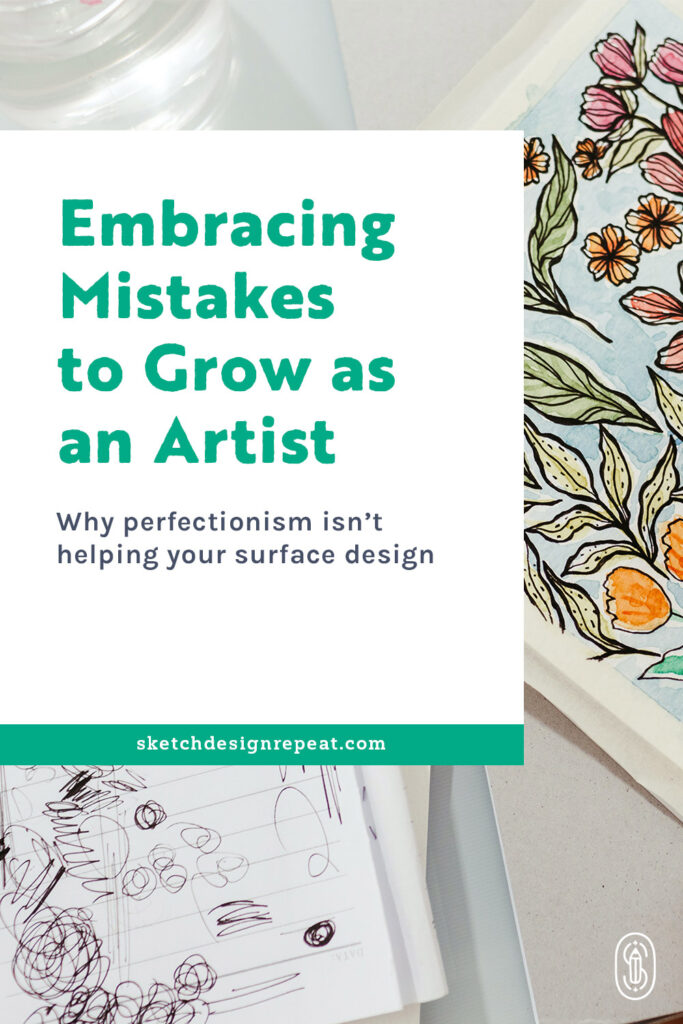
The Problem
‘I’m 10 hours into this project and I’m still not happy!’ Sound familiar?
Like many other artists, I struggle with this often. Perfectionism often leads to a fear of sharing work, making mistakes, and facing criticism, fueling insecurity and setting unrealistic expectations. This mindset creates unattainable goals and diminishes the enjoyment of the creative process, hindering your creativity.
Perfectionists tend to set impossible goals, and if they somehow achieve that goal, they assume that goal must be worthless and they set another, even more impossible goal.
This cycle of perpetual dissatisfaction arises because true perfection doesn’t exist. In art, where perfection is subjective and critique is inevitable, perfectionism can paralyze creativity and productivity, leaving nothing ever feeling good enough. Writer Elizabeth Gilbert describes this issue well:
“We must understand that the drive for perfectionism is a corrosive waste of time, because nothing is ever beyond criticism. No matter how many hours you spend attempting to render something flawless, somebody will always be able to find fault with it. (There are people out there who still consider Beethoven’s symphonies a little bit too, you know, loud.)” — Elizabeth Gilbert, Big Magic
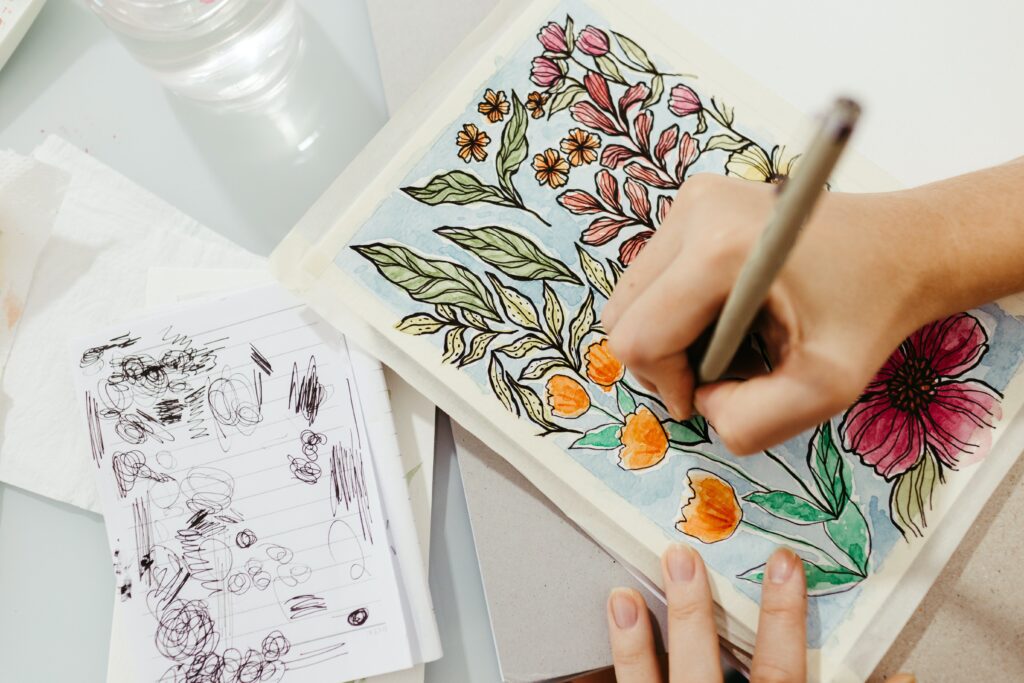
The Consequences
So how does this affect us? Being a perfectionist artist often leads to significant stress and burnout. The constant pressure to meet unrealistic standards can make you feel perpetually behind, spending excessive time on projects and setting unattainable goals. This mindset can result in taking on more work than manageable.
Perfectionism also fuels procrastination, as the fear of producing unsatisfactory work discourages creative efforts from the start. Occasional procrastination is normal, but consistently delaying projects due to fear of inadequacy or lack of readiness (‘I have to be an expert on this topic before I start!’) hinders progress.
This cycle is amplified by feelings of impostor syndrome, where the belief that you’re not qualified enough stops you from starting new ventures. Obsessing over every detail isn’t helpful, especially when learning something new.
This relentless pursuit of flawlessness can kill your confidence, creating a sense of never being good enough and leading to constant self-disappointment. Over time, this can cause art block, where the brain associates creativity with negativity due to continuous frustration.
Related Article: Overcoming Perfectionism:
Why Making Mistakes is a Good Thing
Embracing Imperfection
As artists, we often generate numerous creative ideas that begin as notes, thumbnail sketches, or discussions with peers. However, due to time constraints, only a small portion of these ideas are ever fully realized and shared. Imagine the possibilities if we let go of the need for perfect execution and focused on producing more.
Perhaps these ideas won’t make it into a licensed project or be sold on a greeting card right away, but they show your thought process, creativity, and potential. I’ve often had more positive reactions to sketches, rather than fully executed pieces, because they are unique and authentically me.
Displaying sketches in portfolios and/or online can also enhance our visibility and help us demonstrate our process better. Embracing imperfection allows us to produce and share more of our good ideas, ultimately showing our true capabilities to the world. You’re only as good as the work you make!
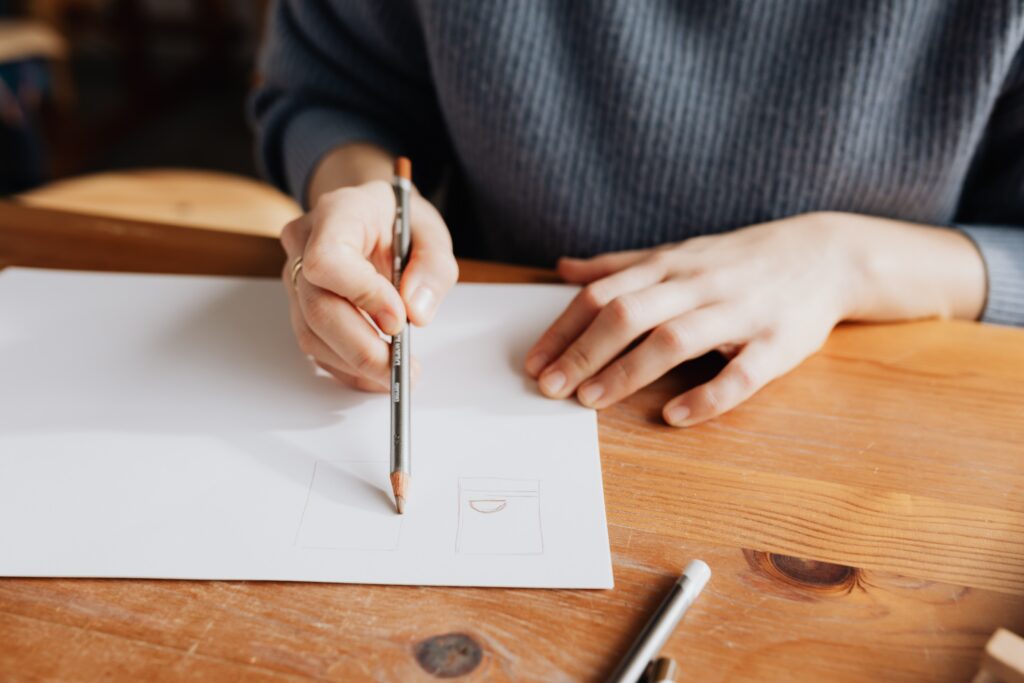
The Solution
Here are a few things you can do to change your mindset, that have helped me too:
1. Be Kind to Yourself
Initially, I believed that hard work (and long hours) alone led to the best creations. However, I’ve realized that my most satisfying and successful projects often didn’t necessarily take long to execute once the idea was there.
I simply needed to have faith that my idea and execution were good enough. Replace perfectionism with self-compassion every step of the way to grow. Trust your creative instincts and have confidence in your abilities to avoid undervaluing your hard work.
2. Finish What You Start
Finish the work you make, even if it’s not great. Completing the work is a big achievement in itself, plus, it’s rare! Most people abandon their ambitious projects due to fear and insecurity. If a task is at 70% of the desired quality, consider it finished.
It’s better to complete three tasks at 70% than one at 100%. Final touches often don’t significantly improve the work, as the idea matters more than the execution. Prioritize ideas over the final result.
3. Keep Making Work, Even If It’s Bad
Make the work, even if you’re not sure you can do it. Radio host and producer Ira Glass explains this well as the idea of a “creative gap” between your taste and your skill set. In the beginning, the gap between our tastes and our abilities is big and daunting. Even though people’s ideas can be great in their heads, the frustration of not being able to achieve them in real life often leads them to quit.
The only way to keep moving forward and grow is to keep making stuff, until what you’re making matches your expectations in your brain. Continuous practice (without fear) means new ideas, fresh perspectives, and stronger skills.
4. Embracing Mistakes
Making mistakes is the fastest way to grow. You’ll never get it right the first time, so focus on constant growth rather than perfect results. There’s no shame in messes, iterations, and mistakes. Giving yourself permission to make mistakes in your art is how you will learn and grow as an artist.
Many successful illustrators, surface designers, and artists make numerous small mistakes, and avoid wasting time on excessive polishing. Instead, they keep creating and moving forward.
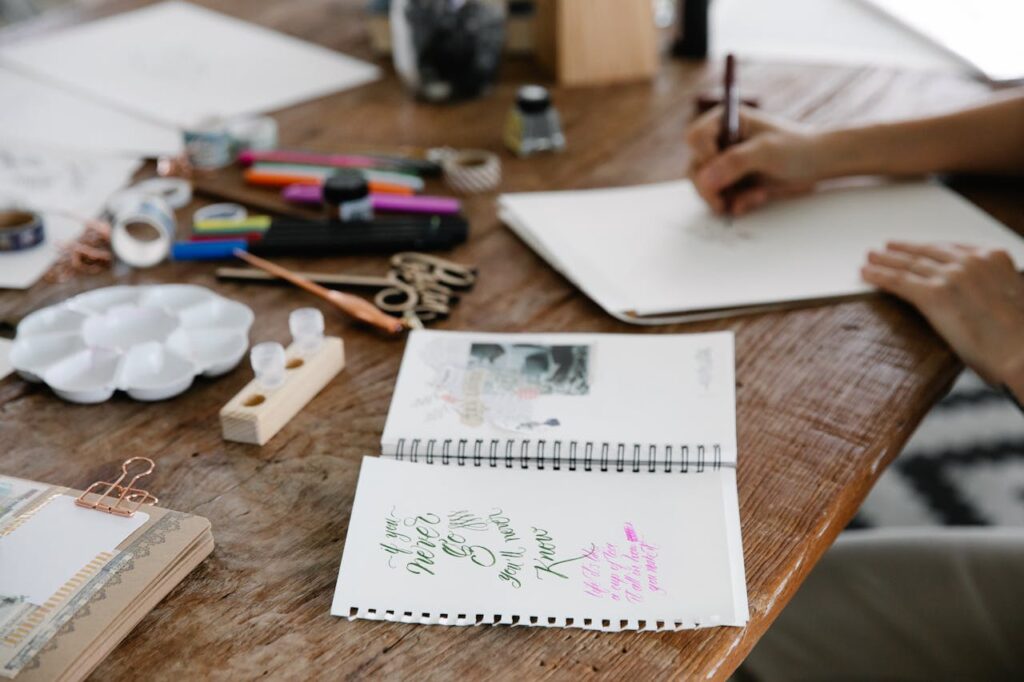
5. Practice Playfulness
Children, unlike adults, don’t have a long-established self-image of someone who’s no good at drawing; they believe in what they are doing and are allowed to be expressive. Approaching art with childlike curiosity can reignite this freedom, and allow us to create without limitations that come with fear and insecurity.
Incorporate timed art sessions with quick thumbnail sketches to learn to let go and avoid stalling. These sessions can spark beautiful ideas and teach us to simply start without overthinking.
6. Keep It Bite-Sized
Often, if a project or goal feels too big or too far away, it becomes unattainable and impossible to start. Set short-term goals and divide projects up into smaller, bite-sized parts to avoid procrastination and overthinking.
Short-term goals are more actionable, helping you stay responsive, and flexible, and reduce perfectionism. If a project feels too big to handle, it can help to divide it up as much as possible and plan it well (time block your calendar to make it easier to start!).
7. Get Feedback
Working in isolation and obsessing over small details can lead to endless striving for perfection. Seeking feedback from peers helps shift focus from achieving flawless results to making progress. It is the fastest way to make things better.
Asking for feedback also reduces your fear of sharing with others. Engaging with peers helps you realize that everyone makes mistakes and that learning from them is a shared experience.
8. Make a Mess on Purpose
Intentionally making imperfect creative decisions can lead to more meaningful and expressive art, and help you let go of aiming for ‘perfect’ results. Using wonky shapes or perspectives can transform a realistic drawing into a more interesting result, full of quirks, that shows your unique point of view.
You can try creative exercises and create purposeful messes to loosen up and spark creativity. Try blind contour drawings to embrace mistakes and find joy in the unexpected results. Limitations can drive innovation, so use whatever materials you have, not worrying about the ‘right’ way to do things.
You can use old, painted, or recycled ‘not perfect’ paper to draw on, to make it easier to start sketching and thus making the barrier to entry lower. It doesn’t matter how you make the mess, just give yourself permission to do it.
As an artist, often working alone, it is easy to stay in your creative comfort zone while nobody is there to tell or force us to take risks, tell us when a design is finished, or when we need to let go. So it’s up to us to understand that being brave and embracing imperfectionism is the only way to become a better artist. What will make you grow as an artist is persistence and bravery, not being a perfectionist.
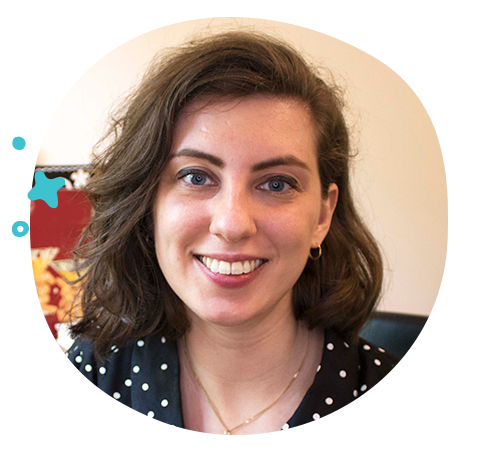
Written by Claire van Kuijck
Website: clairemakesthings.es
Instagram: @claire.makesthings
Claire, of Claire Makes Things, is an illustrator and teacher from the Netherlands, based in Madrid, Spain. She creates murals, chalkboard designs, greeting card designs and more, and teaches illustration and graphic design. She loves all things retro, cocktails, and riding her motorbike.